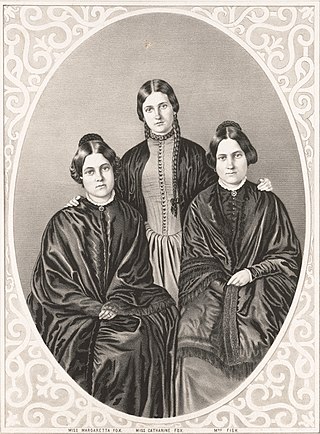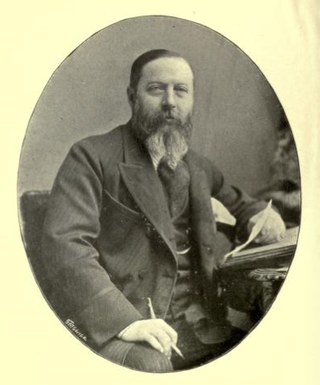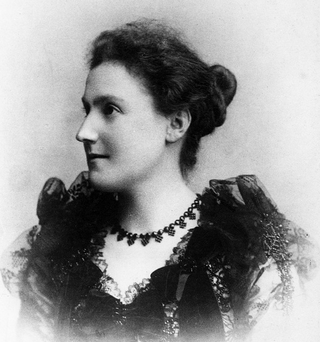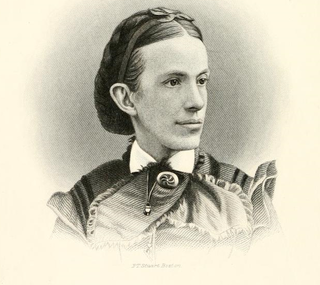
Spiritualism is a social religious movement primarily popular in the nineteenth and early twentieth centuries according to which an individual's awareness persists after death and may be contacted by the living. The afterlife, or the "spirit world", is seen by spiritualists not as a static place, but as one in which spirits continue to evolve. These two beliefs—that contact with spirits is possible, and that spirits are more advanced than humans—lead spiritualists to the belief that spirits are capable of providing useful insight regarding moral and ethical issues, as well as about the nature of God. Some spiritualists speak of a concept which they refer to as "spirit guides"—specific spirits, often contacted, who are relied upon for spiritual guidance. Emanuel Swedenborg has some claim to be the father of spiritualism.

A séance or seance is an attempt to communicate with spirits. The word séance comes from the French word for "session", from the Old French seoir, "to sit". In French, the word's meaning is quite general: one may, for example, speak of "une séance de cinéma". In English, however, the word came to be used specifically for a meeting of people who are gathered to receive messages from ghosts or to listen to a spirit medium discourse with or relay messages from spirits. In modern English usage, participants need not be seated while engaged in a séance.

The Fox sisters were three sisters from Rochester, New York who played an important role in the creation of Spiritualism: Leah, Margaretta, and Catherine Fox. The two younger sisters used "rappings" to convince their older sister and others that they were communicating with spirits. Their older sister then took charge of them and managed their careers for some time. They all enjoyed success as mediums for many years.

The Spiritualist Association of Great Britain is a British spiritualist organisation. It was established on 10 July 1872.
A spirit guide, in Spiritualism, is an entity that remains as a discarnate spirit to act as a guide or protector to a living incarnated individual.
A spiritualist church is a church affiliated with the informal spiritualist movement which began in the United States in the 1840s. Spiritualist churches are now found around the world, but are most common in English-speaking countries, while in Latin America, Central America, Caribbean and Sub-Saharan Africa, where a form of spiritualism called spiritism is more popular, meetings are held in spiritist centres, most of which are non-profit organizations rather than ecclesiastical bodies.

Mediumship is the pseudoscientific practice of mediating communication between familiar spirits or spirits of the dead and living human beings. Practitioners are known as "mediums" or "spirit mediums". There are different types of mediumship or spirit channelling, including séance tables, trance, and ouija. The practice is associated with Spiritualism and Spiritism. A similar New Age practice is known as channeling.

Emma Hardinge Britten was an English advocate for the early Modern Spiritualist Movement. Much of her life and work was recorded and published in her speeches and writing and an incomplete autobiography edited by her sister. She is remembered as a writer, orator, trance clairvoyant, and spirit medium. Her books, Modern American Spiritualism (1870) and Nineteenth Century Miracles (1884), are detailed accounts of spiritualism in America.

The Spiritualists' National Union (SNU) is a Spiritualist organisation, founded in the United Kingdom in 1901, and is one of the largest Spiritualist groups in the world. Its motto is Light, Nature, Truth.

William Stainton Moses was an English cleric and spiritualist medium. He promoted spirit photography and automatic writing, and co-founded what became the College of Psychic Studies. He resisted scientific examination of his claims, which have generally been demolished.
Spiritualism is a metaphysical belief that the world is made up of at least two fundamental substances, matter and spirit. This very broad metaphysical distinction is further developed into many and various forms by the inclusion of details about what spiritual entities exist such as a soul, the afterlife, spirits of the dead, deities and mediums; as well as details about the nature of the relationship between spirit and matter. It may also refer to the philosophy, doctrine, or religion pertaining to a spiritual aspect of existence.

The National Spiritualist Association of Churches (NSAC) is one of the oldest and largest of the national Spiritualist church organizations in the United States. The NSAC was formed as the National Spiritualist Association of the United States of America (NSA) in September 1893, during a three-day convention in Chicago, Illinois. Although American Spiritualists had previously tended to resist institutional or denominational organization, early NSA leaders hoped organization would help promote the truths of the religion both spiritually and practically. Organization could help non-Spiritualists distinguish genuine mediumship from the rapidly proliferating varieties of fraudulent mediumship, increase communication among Spiritualists, prevent the legal prosecution of spirit mediums under fortune telling and medical licensing laws, and counterattacks by "orthodox" ministers in the press. To these reasons, early leaders added the material support of spirit mediums and healers, just as other religious groups provided for the support of their clergy.

William H. Mumler (1832–1884) was an American spirit photographer who worked in New York and Boston. His first spirit photograph was apparently an accident—a self-portrait which, when developed, also revealed the "spirit" of his deceased cousin. Mumler then left his job as an engraver to pursue spirit photography full-time, taking advantage of the large number of people who had lost relatives in the American Civil War. His two most famous images are the photograph of Mary Todd Lincoln with the ghost of her husband Abraham Lincoln and the portrait of Master Herrod, a medium, with three spirit guides.

Leonora Piper was a famous American trance medium in the area of Spiritualism. Piper was the subject of intense interest and investigation by American and British psychic research associations during the early 20th century, most notably William James and the Society for Psychical Research.

Gladys Osborne Leonard was a British trance medium, renowned for her work with the Society for Psychical Research. Although psychical researchers such as Oliver Lodge were convinced she had communicated with spirits, skeptical researchers were convinced that Leonard's trance control was a case of dissociative identity disorder.

Geraldine Dorothy Cummins was an Irish spiritualist medium, novelist and playwright. She began her career as a creative writer, but increasingly concentrated on mediumship and "channelled" writings, mostly about the lives of Jesus and Saint Paul, though she also published on a range of other topics.

William Roy (1911-1977) was the pseudonym of William George Holroyd Plowright, a notorious fraudulent medium in the history of British spiritualism.

Rosina Thompson was a British trance medium.

James Martin Peebles was an American physician, prolific author and organizer of many professional, medical, and psychic/spiritualist religious associations.

Frances Ann Conant, also known as J. H. Conant, was an American spiritualist medium.


















